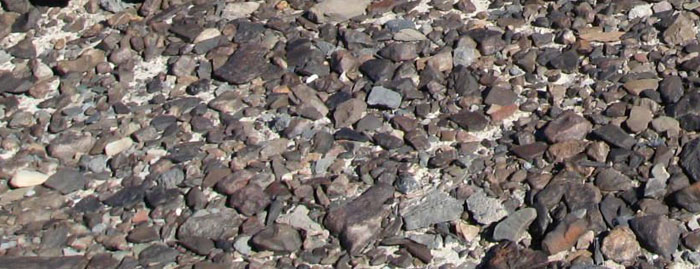Rocky Soil Type Important for Groundwater
August 14, 2010 - We have been learning new things about an arid soil type during recent large solar project hearings and workshops. Desert pavement has come up repeatedly as a land surface type that has been ignored for too long.
When a shallow layer of rocks lies over fine sand and silt, this is a unique formation that people unfamiliar with the desert may think is barren and useless. But geologists and hydrologists are finding otherwise.
Desert pavements are found on alluvial fans and piedmonts below mountains in the Mojave and Sonoran Deserts. Stones over fine sediments may form a weak pavement, in the case of granitic stones at the Imperial Valley Solar Project site which decompose and weather more quickly, or if derived from volcanic or limestone sources, may be densely packed, inter-locking, and resistant. Wind-blown silts and sands collect in between and below the gravel pavement. Varnish usually colors the rock surfaces exposed to air a darker color, and can be useful for aging the pavement. Varnish is the result of surface evaporation of various salts on the rock, building up a crust.
Dr. Boris Poff, hydrologist at Mojave National Preserve, gave testimony at the Calico Solar Project evidentiary hearing held by the California Energy Commission on August 5, 2010. The rock surface of desert pavements stabilizes fine sediments underneath, and may potentially increase rainwater infiltration. When they are disturbed, desert pavements lose this function and surface run-off increases, as does erosion and downhill sedimentation.
Many desert pavements are extremely old, taking thousands of years to develop. North of the Calico project site, a desert pavement has been dated at 7,000 years old. There can be three feet of deep sand under the rocky cap that takes millennia to build up.
Small mining roads through desert pavements have yet to recover from this disturbance.
The National Resource Conservation Service has started a soil mapping program at Mojave National Preserve, and they have found that desert pavements have not been adequately analyzed and categorized. Much of the data is out-dated.
Conversely, other desert pavements may be younger and hide archaeological treasures. At the Calico Solar Project workshop held August 12, 2010, we learned from archaeologist Dr. David Whitley, that one cannot assume that subsurface archaeological materials are absent just because a desert pavement covers the ground. "This is a myth," he told the applicant, Tessera Solar. He explained that recently scientists have learned that some desert pavements can form quickly, and ceramics have been found underneath them.
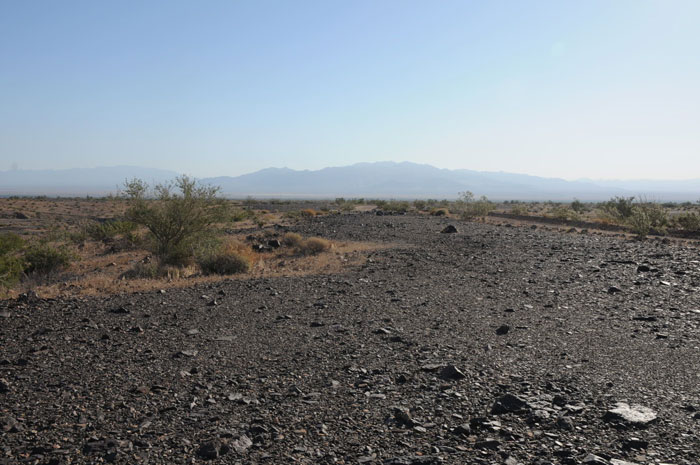
^A stark desert pavement in the Chuckwalla Mountains Wilderness, Riverside County.
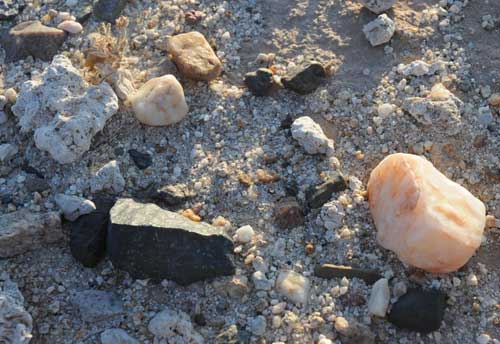
^Wind-carved ventifacts form a desert pavement at the Imperial Valley Solar Project site.
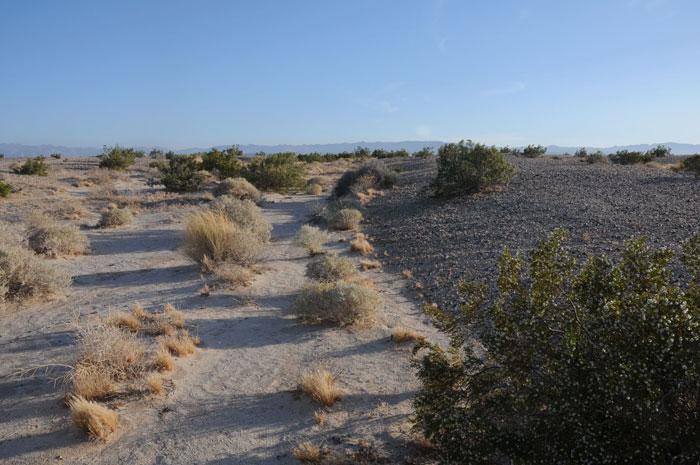
^A sandy wash abruptly meets a section of natural desert pavement on the Imperial Valley Solar Project area.
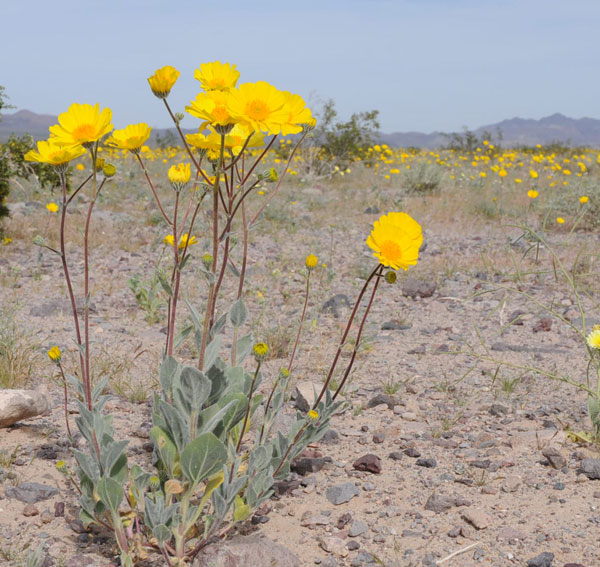
^At the Calico Solar Project site in San Bernardino County, Desert gold wildflowers (Geraea canescens) pop up between rocks on a desert pavement.
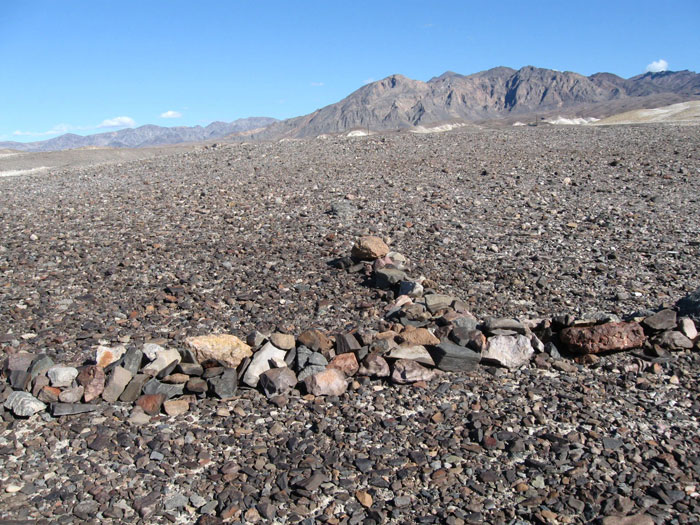
^Death Valley National Park: strange rock alignments called geoglyphs are scattered in the valley, ancient prehistoric features built on desert pavement by people thousands of years ago.
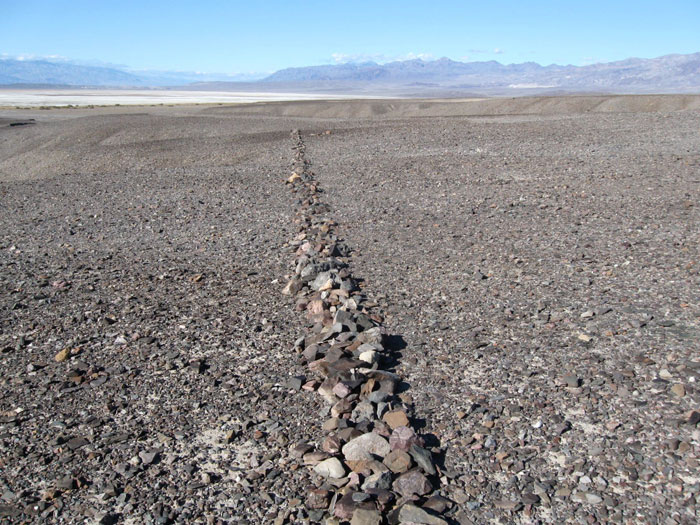
Geoglyph in Death Valley National Park on desert pavement. No one knows what they mean. Some have associated artifacts that may date them to many thousands of years ago.

^Strips of natural desert pavement alternate with washes and gullies filled with desert vegetation. Chuckwalla Valley looking towards the CoxComb Mountains in the Colorado Desert, Riverside County.
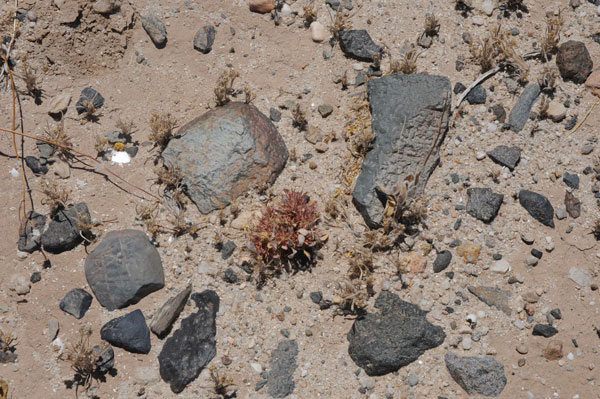
^Open desert pavement with silty soil, and dry Spiny chorizanthe (Chorizanthe rigida). Imperial Valley Solar Project site.
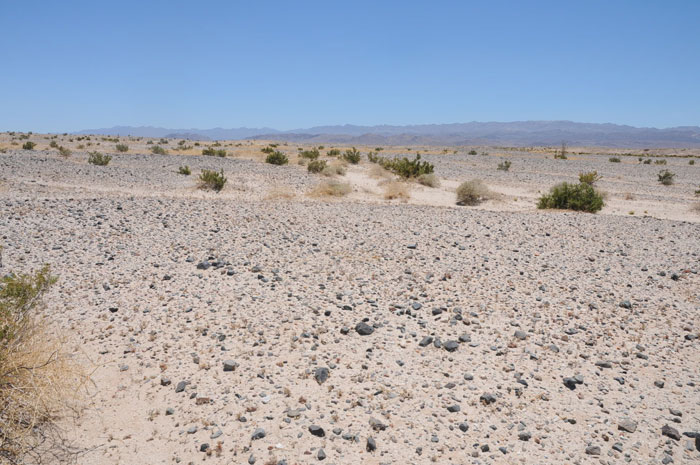
^Open desert pavement with sandy washes, Imperial Valley Solar Project site.

^Chuckwalla Valley: desert pavement between blooming Brittlebush (Encelia farinosa) and Palo verde (Parkinsonia).
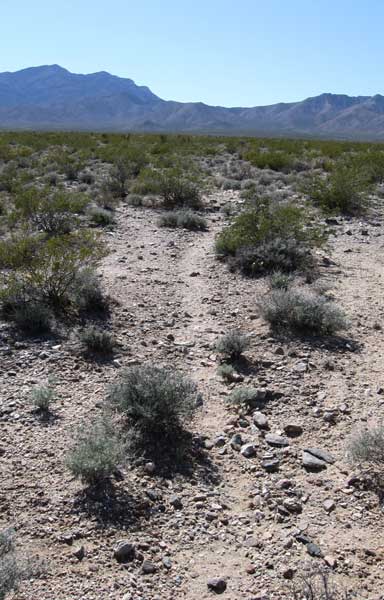
Disturbance
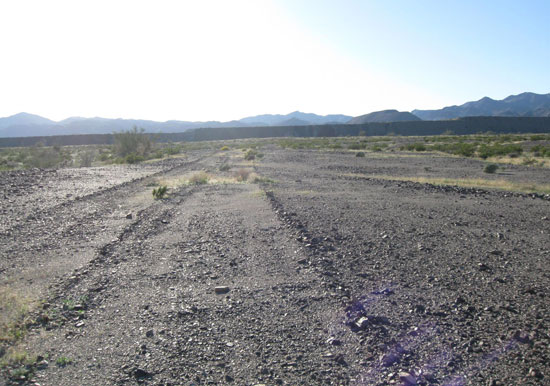
^Disturbed desert pavement in Chuckwalla Valley from mining.
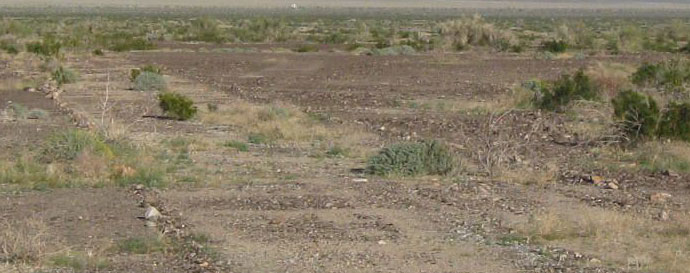
^Old road is still visible.
HOME.....Imperial Valley Solar Project.....Calico Solar Project.....Chuckwalla Valley
